Former chief patents design for pipeline protection
Last updated 2/5/2008 at Noon
Local men form company, Protective Housing Systems John Tarver was in a deer blind one day and looked at an exposed pipeline and valve standing on top of the ground.
As his mind wandered in the quiet of nature, he thought about what might happen if a stray bullet hit the pipeline.
So on his hunt for a deer, an idea was triggered.
The idea kept him up at nights working on a design to cover and protect the pipelines that stick out of the ground all over Southeast Texas, and well, the world.
In January, Tarver and his business partner, Gene Allen of Orange, learned that after three years, the U.S. Patent Office had granted a patent to Tarver’s design to build protective metal housing, with a concrete footer base support, around exposed pipelines.
Now the two are ready to take orders and construct the custom covers through their company, Protective Housing Systems LLC. “We are unique and useful and there is nothing else like it, according to the U.S. Patents.” Tarver said.
“He is 100 percent the designer.
I’m just the business partner,” Allen said about Tarver.
Tarver has spent his adult life in law enforcement and he knew that after the Sept. 11 attacks, terrorists might hit pipelines.
And besides terrorists, the exposed pipelines are often near traffic and can be hit by a car or large truck.
Plus, natural disasters like hurricanes and tornadoes can send debris flying to damage a pipeline.
When a pipeline is damaged, noxious and sometimes poisonous gases can escape, or the line can explode, causing a chain reaction.
Tarver was chief deputy for the Orange County Sheriff’s Office when he got the idea for the pipeline covers.
He has previously served as Bridge City chief of police, and he is now a patrol officer for West Orange.
He isn’t an engineer and he isn’t a draftsman, but he knew he could figure out a way to protect pipelines.
First, he researched on whether the protective covers already existed.
He discovered the Alaska pipeline in the 1970s had a cover to prevent freezing, but no practical pipeline protection cover was available.
So he began to design something to cover and protect exposed pipelines.
The design would also have to allow access and room for workers to reach the line and valves.
One of his inspirations was the turtle.
A turtle’s shell protects the animal on the inside and out.
The shell isn’t flat and rain runs off it.
“I wanted (the cover) to deflect weather, deflect bullets, deflect bombs,” Tarver said.
The protective cover design includes a hip roof.
Tarver talks about trapezoidal sides in his design.
“It sounds like I know a lot about geometry, but I don’t,” he said.
His father was a construction carpenter who made manholes.
Tarver has worked construction before and built his own house.
But he isn’t an architect, either.
Eventually, Tarver created a design and he hired a draftsman to draw the design to get a patent.
He hired a Houston patent attorney to represent him and file for the patent.
Tarver asked his friend Allen to be his partner.
The two go to Community Church in Orange and respect each other.
Allen owns an industrial painting company that caters to the oil and gas business.
“I felt like I needed somebody with the business background,” Tarver said.
Allen joined the effort because he could foresee a successful product.
His wife arranged for a Lamar engineering professor with a doctorate degree to run stress tests on the product.
It worked.
It would even withstand being hit by a speeding SUV or 18-wheeler.
After the testing, the professor offered to forego his standard fee, in exchange for a percentage of the invention.
Tarver and Allen paid him, rather than give him part of the design.
“We knew we could have a company, then,” Allen said.
“It was marketable.” Tarver’s attorney filed for the patent in December 2004.
They knew it would take time, even years.
They also learned patents take patience.
Two or three weeks ago, Tarver received mail from companies offering to sell him plaques and certificates of his patent.
He hadn’t even learned yet that the patent had been approved.
The Patent Office patented the design on Jan. 15.
After three years of waiting, the two were ready to begin business.
Tarver said he didn’t have any special celebrations.
“I can’t afford champagne,” he said.
“I bought a patent.” The business partners have had a film made on the product along with brochures.
Plus, Tarver, with his law enforcement background, has contacted officials with Homeland Security who are interested in the invention.
But they waited until the patent was official before selling the product so they wouldn’t worry about anyone stealing the design and idea.
Now, they’re ready to go.
The metal housing will be custom designed for each exposed pipe.
The design includes a 24-inch concrete footer around the pipe area, with another 24 inches of dirt and grass on top of the concrete.
Tarver said a speeding truck won’t be able to hit the pipe at a straight, 90 degree angle.
The metal housing will be lifted by crane and connected with the footer.
The housing can have special ventilation, or even a vacuum system inside.
The system can come with monitors to detect leaks or unauthorized access.
A solar generator can power the monitoring systems.
Tarver said the company has local contractors and fabricators ready to begin the manufacturing.
The partners plan to keep the business centered in Orange County.
They agree they could probably sell the patent, but for now, they’re ready to begin selling and manufacturing.
In the meantime, though, Tarver still plans to patrol the streets of West Orange.
He hasn’t quit his job.

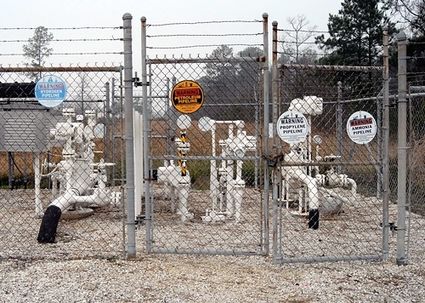
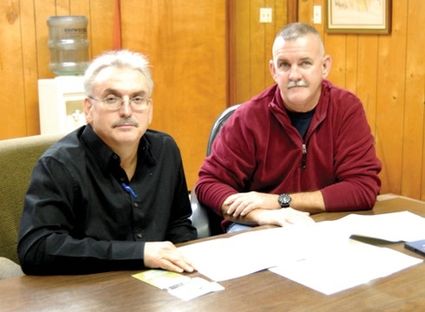
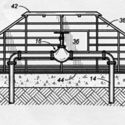
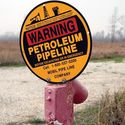
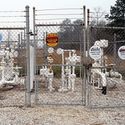
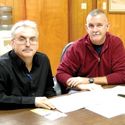














Reader Comments(0)